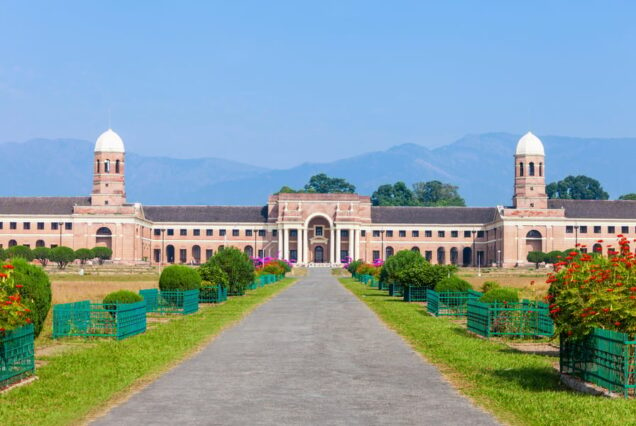Sri Badrinath Dham Yatra ( EK dham) 3 Days / 2 Nights
Overview
Badrinath is a revered town in the Chamoli district of Uttarakhand, India. It is renowned for the ancient Hindu temple, Badrinath Temple, which is dedicated to Lord Vishnu. Badrinath is one of the four destinations of the Char Dham Yatra, an important pilgrimage circuit for Hindus that also includes Kedarnath, Gangotri, and Yamunotri.
Tour Highlights
- Badrinath Temple: The Badrinath Temple is the primary attraction in the town and is one of the most important temples in Hinduism. It is situated at an altitude of around 3,300 meters (10,827 feet) above sea level, making it one of the highest-altitude Hindu temples in India. The temple is dedicated to Lord Badrinarayan, an aspect of Lord Vishnu.
- Char Dham Yatra: As mentioned earlier, Badrinath is one of the four pilgrimage sites of the Char Dham Yatra. Devotees undertake this journey to seek spiritual blessings and attain salvation, with Badrinath being the last and most important stop on the circuit.
- Accessibility: Badrinath is accessible by road during the pilgrimage season, which usually starts in April/May and lasts until October/November. The town is connected by well-maintained roads, and visitors can reach there by private vehicles or public transport. However, due to its high altitude and challenging terrain, the town remains closed for several months during winter when heavy snowfall blocks the roads.
- Natural Beauty: Badrinath is surrounded by majestic snow-capped peaks, making it a visually stunning location. The town is situated on the banks of the Alaknanda River, adding to its charm. The region’s picturesque landscapes attract nature enthusiasts, photographers, and trekkers.
- Pilgrimage and Festivals: Badrinath attracts thousands of pilgrims from India and abroad each year. The temple opens its doors to devotees during the pilgrimage season, and special prayers and rituals are conducted. The temple sees a surge of visitors during festivals like Maha Shivaratri and the Badri-Kedar festival.
- Accommodation and Facilities: Despite its remote location, Badrinath offers various accommodation options, including hotels, guesthouses, and dharamshalas (pilgrims’ lodges). Facilities like eateries, medical aid centers, and shops are available to cater to the needs of pilgrims and tourists.
- Winter Closure: Due to heavy snowfall and harsh weather conditions, Badrinath remains closed to visitors during the winter months. The deity is shifted to the nearby village of Joshimath, where worship continues during this period.
Included/Excluded
- Hotel
- Sightseeing
- Transport from Haridwar to Haridwar
- Toll tax and parking
- Driver Allowance
- Accommodation in the mention hotels for 02 nights
- Daily breakfast and dinner at hotel only
- All applicable Taxes
- Air fare / train fare
- GST (Government Service Tax)
- Helicopter ticket and VIP Darshan charges
- Doli / Pony
- Expenses of personal nature such as tips, telephone calls, laundry, liquor etc.
- Any other item not specified in 'Tour include'
- Porterage during trekking
- Entrance fees during sightseeing
- Travel Insurance
- Expense incurred due to bad weather condition, road closes, landslides etc.
Tour Plan
After breakfast in morning, depart for Badrinath at 6:00 a.m.Upon arrival in Badrinath, check into the hotel. After taking a bath in the Taptkund, pilgrims view Badrivishal and perform Aarti in the evening. The significance of Brahamakapal for the PinddanShraddh of the Ancestors (Pitrus)
After breakfast, the driver drives you via Joshimath to Rudraprayag. Visit the Narsingh Temple in Joshimath en route, and then travel via Joshimath to return to Rudraprayag. Upon arrival in Rudraprayag, check into the hotel. Stay the night in Rudraprayag. Rudraprayag Climate – The summers are typically warm, with temperatures between 35 and 40°C. In the winter, the days are pleasant cool but the nights are chilly, with temperatures between 20 and 5°C. Along with Mana, VyasGufa, Maatamoorti, Charanpaduka, Bhimkund, and the “Mukh” of the Saraswati River, there is another intriguing tourist attraction. Badrinathjee is around 3 miles away. Stay the night in Badrinath.
The average maximum temperature in Badrinath will be around 18°C, and the average lowest temperature will be around 8°C. Therefore, wearing warm, woolen clothing is necessary throughout the entire year when visiting Badrinath. In Badrinath, snowfalls are common during the winter. The average temperature throughout the winter is only 5°C. Due to the harsh weather, this time is typically off-limits to tourists.
Leaving after breakfast, take the Rishikesh route to Haridwar. The Shivalik range of the Himalayas surrounds Rishikesh, often known as the “place of sages,” on three sides, making it a revered spiritual hub on the Ganges River. According to legend, God appeared as “Hrishikesh” when Raibhya Rishi was performing difficult penances, and as a result, this region first became known as Rishikesh. Visit the Rishikesh Temples afterwards. Ram and Laxman Jhulla are two sight-seeing guides. Drop off later in Haridwar






